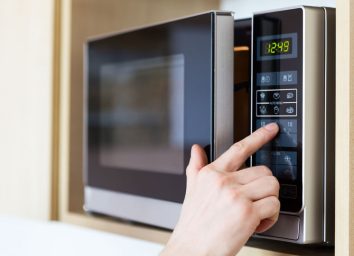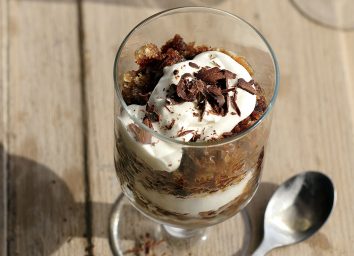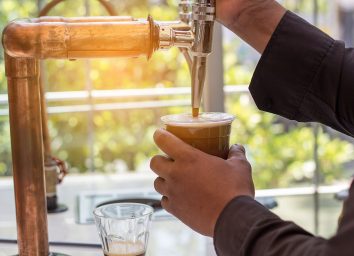11 Coffee Pot Mistakes You’re Making
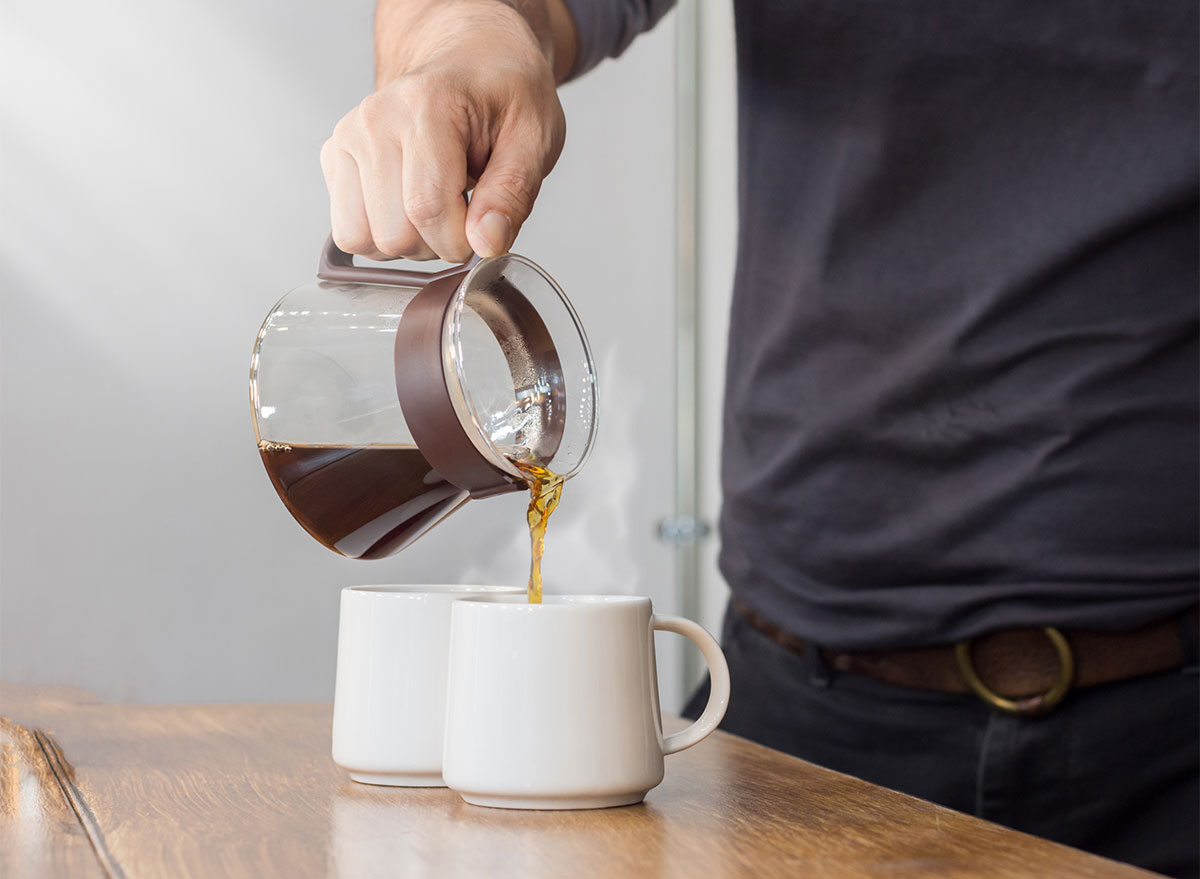
Sorry to break it to you, but your morning cup of Joe might be a lot less fresh—and a lot less fantastic—than it could be. See, there’s a chance you’re (unintentionally) making mistakes with your coffee pot that are ruining your morning brew (and might even be putting your health at risk). About 50% of coffee machines in U.S. kitchens are home to yeast and mold, according to NSF International, a public health and safety organization. Yikes!
So we turned to Lisa McManus, executive tasting and testing editor at America’s Test Kitchen in Boston, Massachusetts, to figure out what’s best when it comes to taking care of your home coffee pot so you don’t keep on making these common coffee pot mistakes. We’re here to help you out, all so you can brew better.
And while you’re uncovering the truth about your coffee pot, make sure you check out these 52 Life-Changing Kitchen Hacks That’ll Make You Enjoy Cooking Again.
Mistake: Not cleaning the coffee pot daily
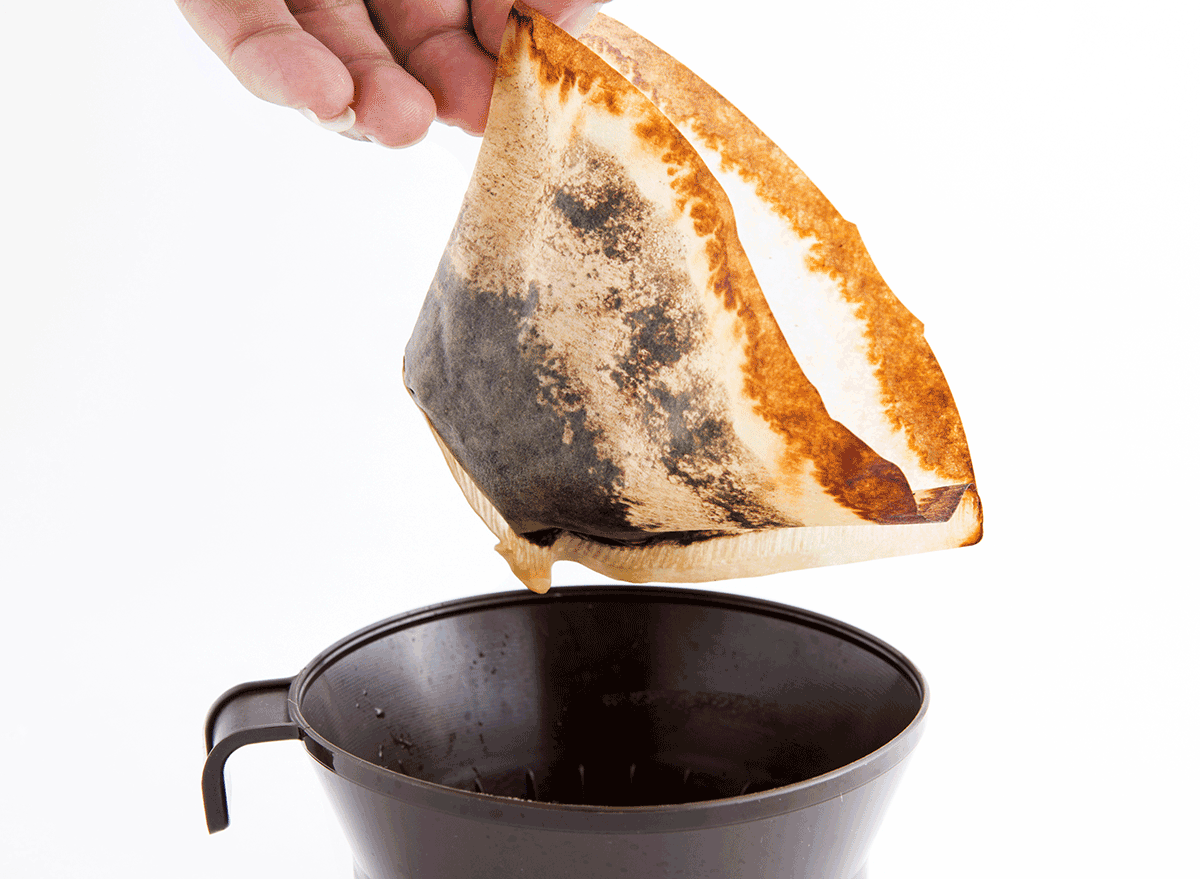
You’ve probably seen those well-loved coffee pots refilled again and again at your local 24-hour diner without a break. While it’s charming to think of the idea that a pot’s always brewing, it’s probably not a wise strategy to follow at home.
“You should be cleaning the carafe daily to get rid of old coffee oils that can cling to its walls and turn bitter and rancid,” McManus says. Yep, that means if you’re using your pot every day, you should be cleaning it out just as often. Scrubbing with soap and water—and then rinsing with more H2O and a wipe dry—should do the trick.
Mistake: Forgetting to descale internal parts quarterly
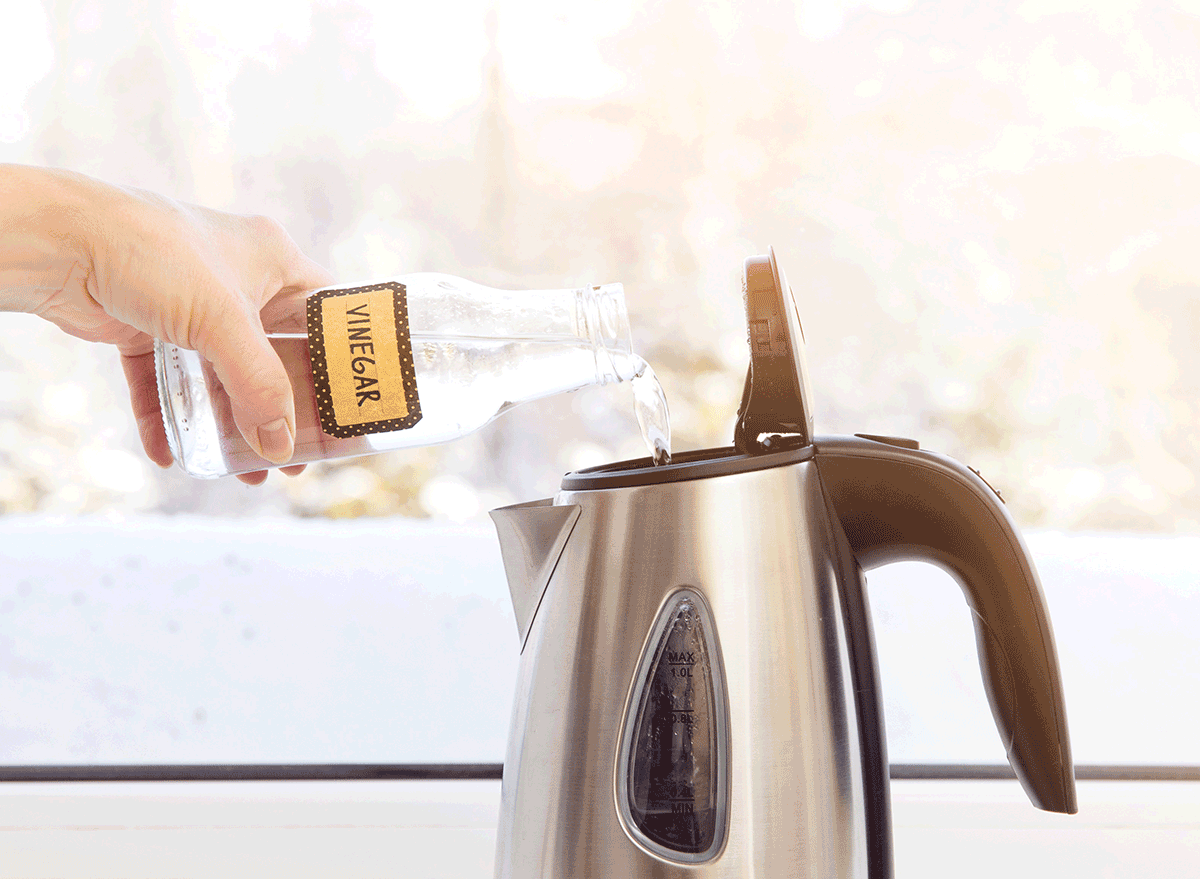
…Or more often than once every three months, if you notice the brewing process moving slower than normal.
“When your brewer needs ‘descaling’ it’s like the machine has clogged arteries. If you don’t descale, your machine can make coffee more and more slowly so it tastes bitter, and eventually, the machine will stop working altogether,” McManus says.
Essentially, minerals accumulate on the internal surfaces of the coffee pot due to repeated contact with hard water. Descaling strips that away. America’s Test Kitchen’s experts recommend descaling products like Dezcal to help effectively get the job done.
“These dedicated descalers work much better than the usual advice about vinegar and water and have instructions right on the bottle or packet,” McManus says. “Vinegar can remove some coffee oils. It’s not as fast or effective at removing mineral deposits inside your machine, though.”
The harsh acidity of vinegar could also etch the metal of the inside workings, giving your coffee a metallic off-taste over time.
Mistake: Not using the freshest, cleanest water
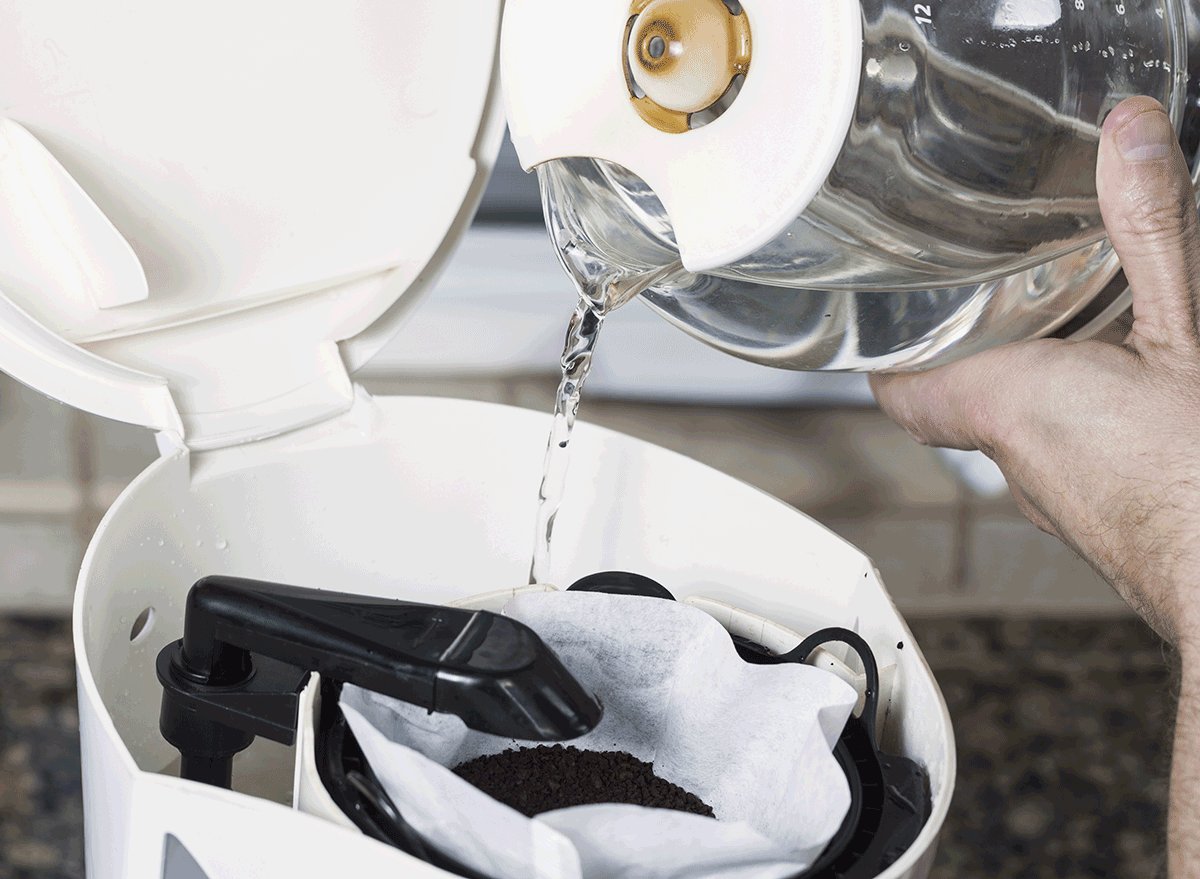
Because coffee is mostly water, if the water you’re starting with isn’t tasty, your cup of Joe won’t be either. If you’re the scientific type, the Specialty Coffee Association recommends these qualities in water for “superior quality extraction.” Your water should be “clean, odor-free, and clear color.” If you have a water filter in the fridge, try using that in the coffee maker, rather than water straight from the tap.
And let’s not forget about that other beloved appliance, the microwave! Check out This Is the Mess-Free Way to Clean Your Microwave.
Mistake: Buying large amounts of ground coffee
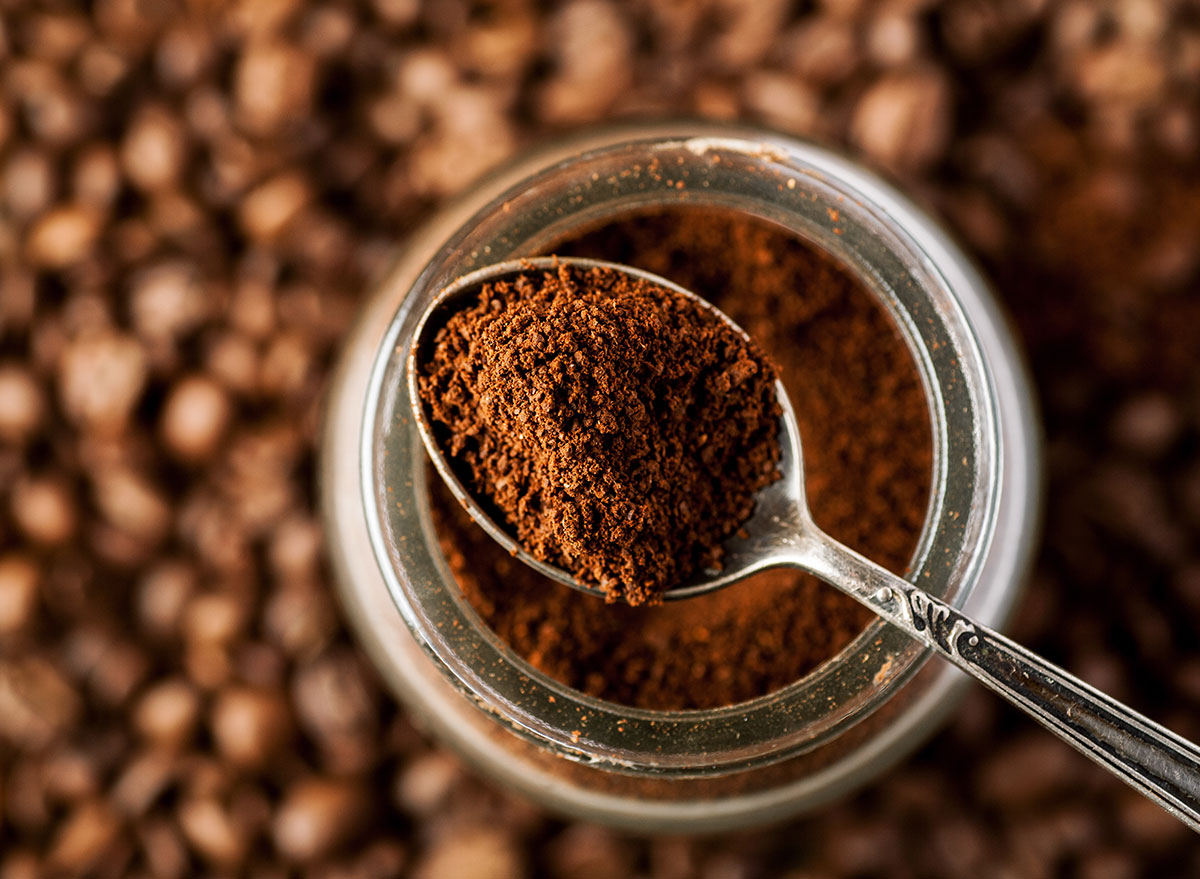
Grabbing a big bag of grounds is convenient, true, but it’s not going to lead to the most luscious java. Your best bet is to grind your beans at home—and if you can’t do that, only buy smaller bags of ground coffee.
“Buy smaller quantities of good coffee beans at a time and store them in the bag they came in, tightly sealed to keep them fresh,” McManus says.
So what’s the best method when it comes to buying beans? Only purchase what you’ll use within two weeks, and store them in a place that allows the beans to avoid heat, light, and excess air.
Mistake: Grinding your beans too far in advance

Speaking of freshness, keep that bean grinder handy. Your joe tastes best when the beans are ground just before brewing. This means you’re going to want to grind beans right before you plan to pop them in the machine for the freshest, fullest flavor, McManus says.
Want to make sure you’re brewing the best cup of Joe? Avoid these 13 Terrible Ways You’re Ruining Your Coffee.
Mistake: Skimping on the coffee grounds
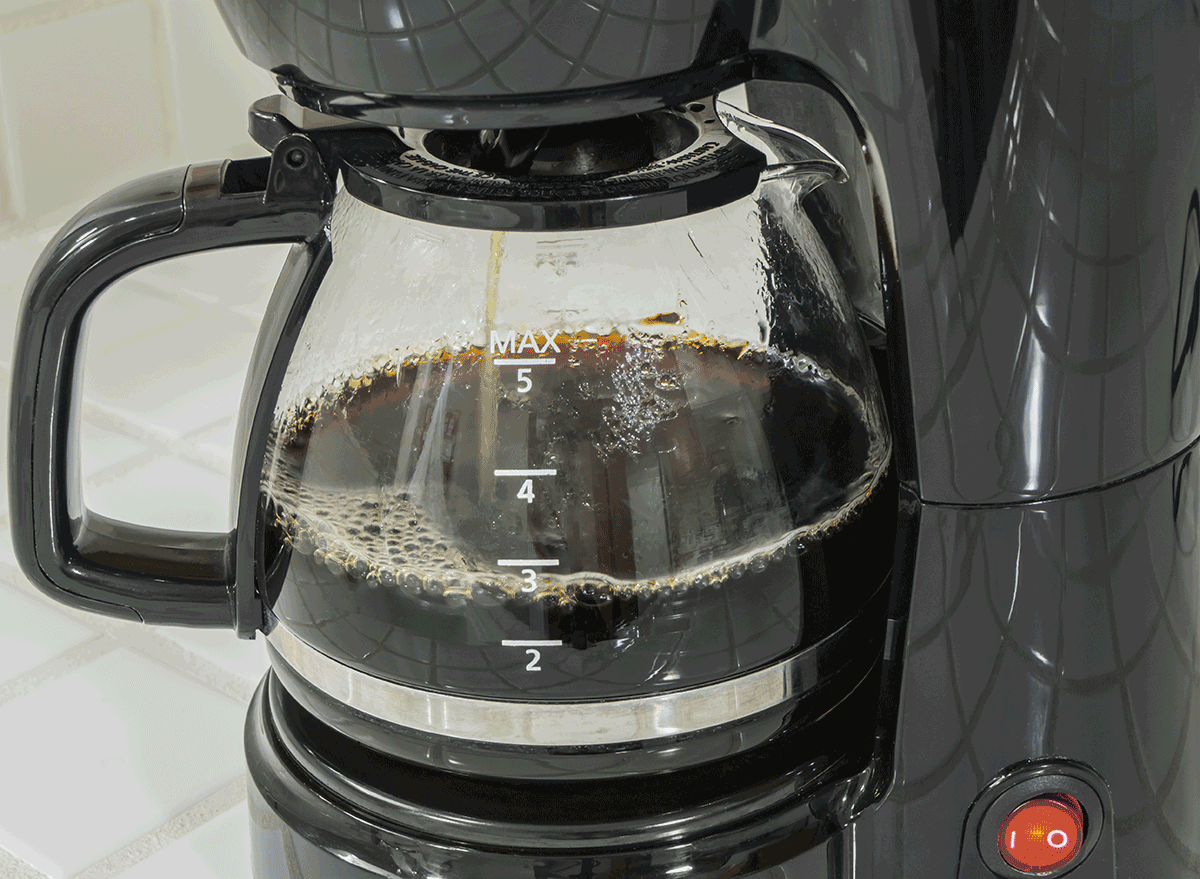
You’re going to want to be generous with that scoop, at least if you want to make a high-quality tasting drink. Here’s some more science on the perfect pour: The Specialty Coffee Association created a standard ratio of water to coffee that is optimum, McManus notes.
“Aim for 9 to 11 grams—about two tablespoons—of freshly ground coffee per six ounces of water. It might sound like a lot. Try it, though, and you’ll be amazed at how much more your home coffee suddenly tastes like the good stuff from the coffee shop,” she says.
Mistake: Brewing at the wrong temperature
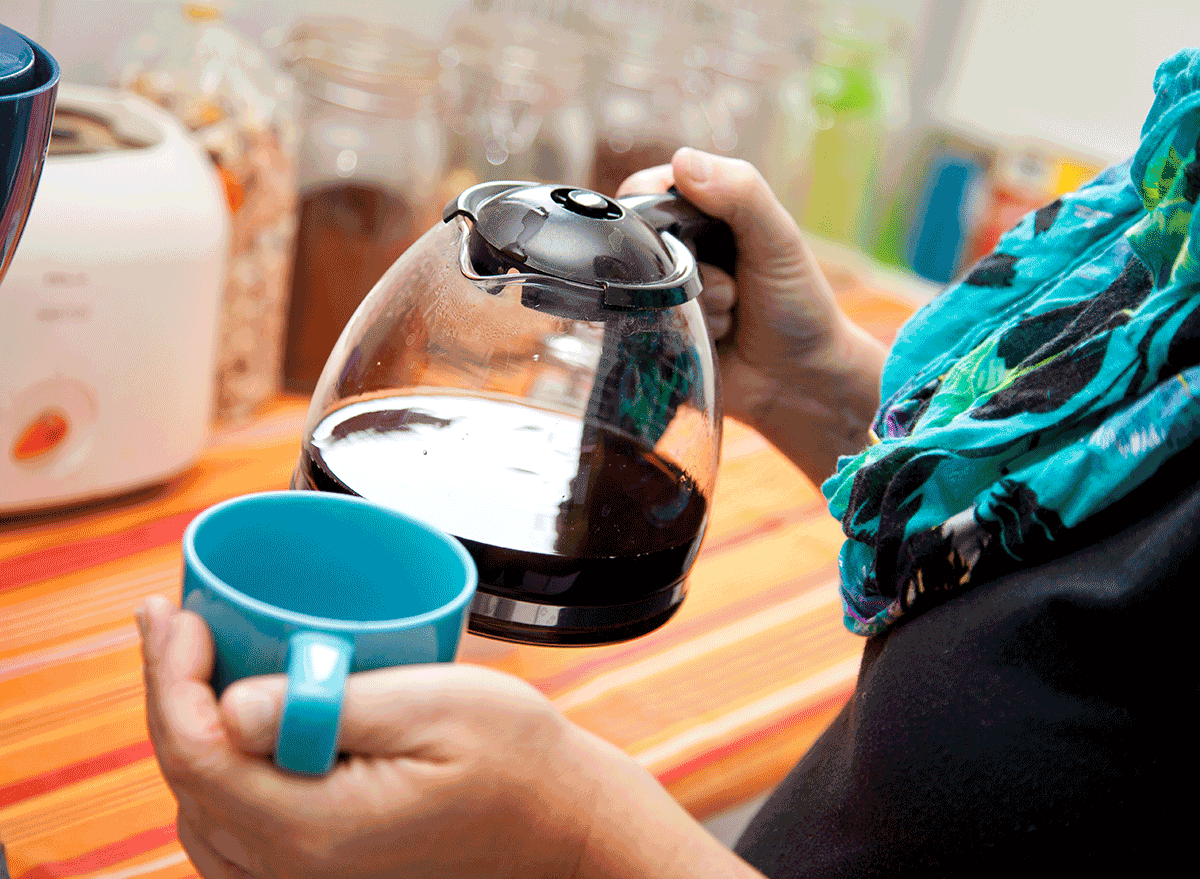
Go for the Goldilocks “just right” heat when it comes to the H2O you’re using in your coffee pot.
“It should be between 195 to 205 degrees Fahrenheit. This is not a full boil,” McManus says. Water within this range helps to extract the best flavors from the beans.
Mistake: Employing the wrong filter
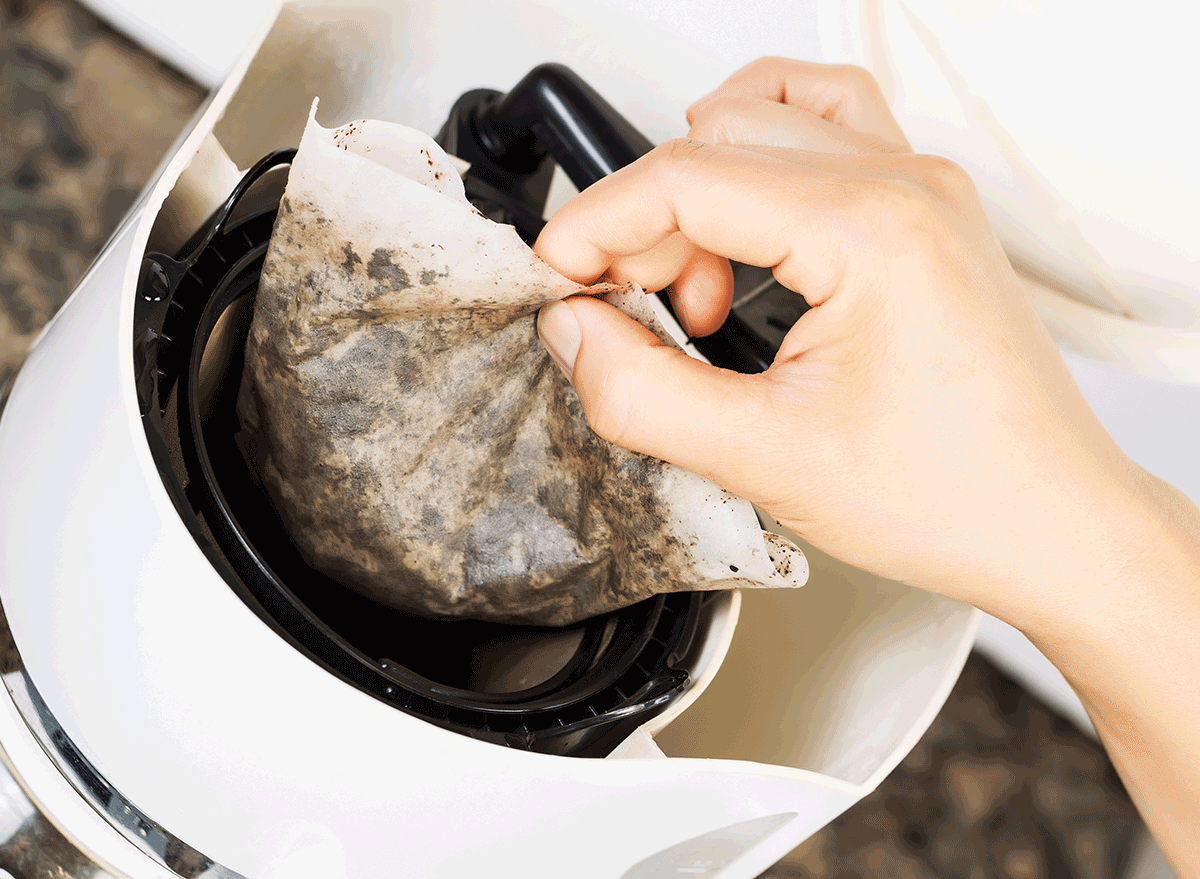
No need to worry about prepping the filter before popping it in the machine. As long as you’ve bought the best size, you’re good to go.
“If you’re using a paper filter, a lot of people like to run some boiling water over it first to get rid of that papery taste. We really haven’t noticed a big difference with that strategy,” she says. “Just make sure you’re using the right size for your machine to keep it neat.”
And you can also compost the filter and grounds afterward!
Mistake: Following the same formula, even if you’re unhappy with your cup
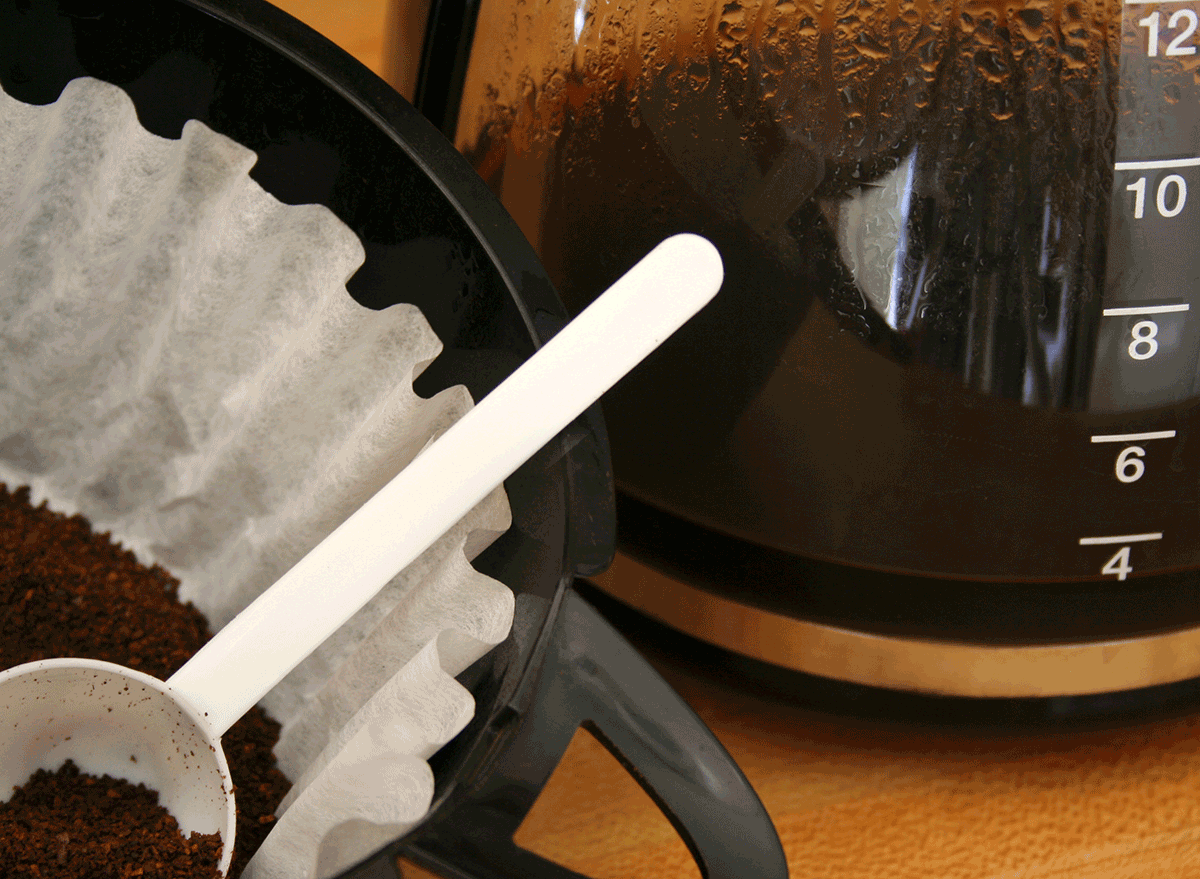
“Don’t be scared by all the extreme technical info you can read online about coffee making. You can make great coffee at home, and it’s not that hard,” McManus says.
Play around with grind size, and try a wide swath of bean varieties until you find what you like best. Be creative until you find what you like best.
“Try pour-over and French press or Moka pots, too,” she says. “You can get different body and flavor from the same beans depending on how you brew.”
Want to post what you brew up? Here are the 20 Best Coffee Quotes for Coffee Lovers to share along with your photos.
Mistake: Buying the wrong machine in the first place
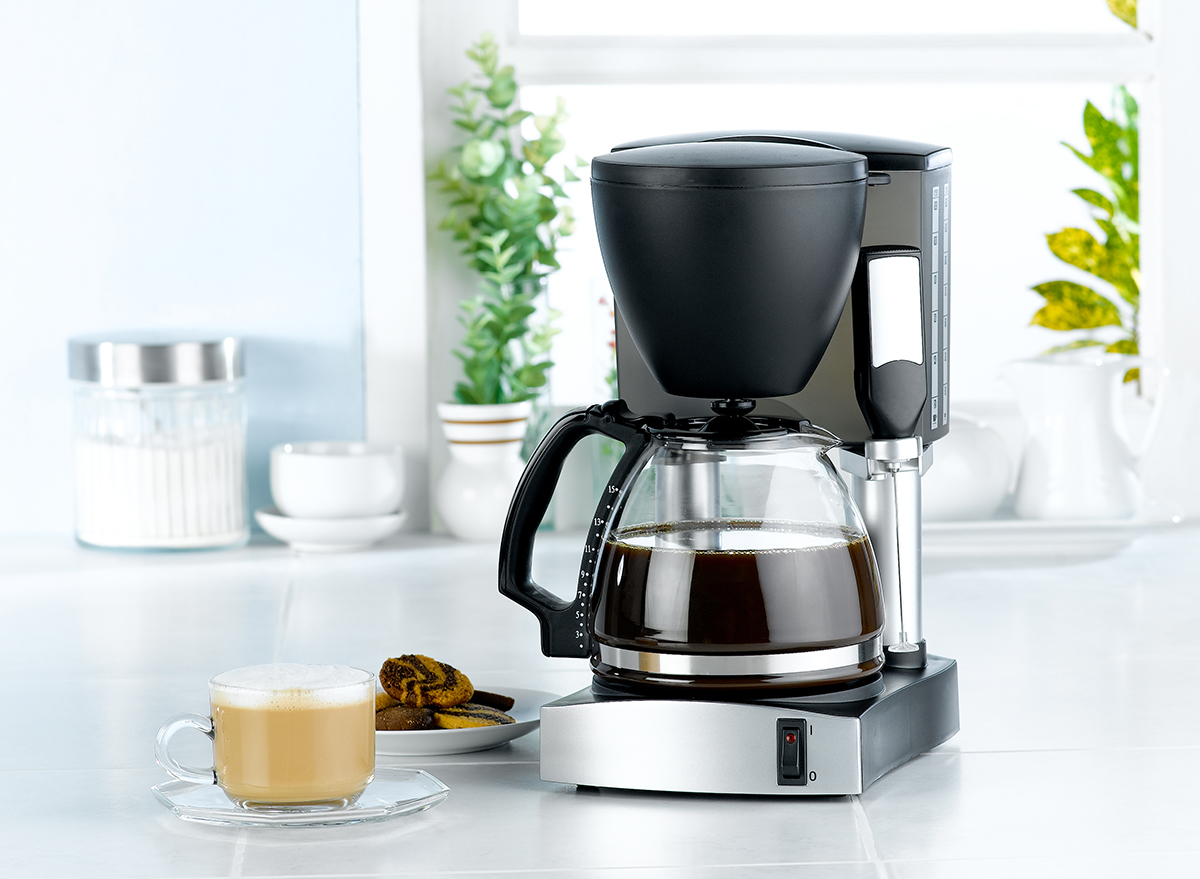
Just as the wrong tool makes a DIY job nearly impossible or an incomplete ingredient list hampers that classic recipe, utilizing a sub-par automatic drip coffee maker can wreak havoc on your morning routine.
“We’ve found that too many coffee makers either have a coffee reservoir that is too small (so it physically can’t hold enough grounds to make good coffee for that amount of water) or it heats water to the wrong temperature so the coffee is over- or under-extracted and tastes weak, sour, or bitter,” McManus says.
America’s Test Kitchen’s pros prefer thermal carafes so that the brewed coffee never falls victim to scalding via the too-strong heating platform.
“And many coffee makers don’t brew the pot of coffee in the optimal time frame,” McManus says. “Look for a machine that has the coffee and water in full contact for no less than four and no more than eight minutes for the best results.”
Mistake: Using a single-cup brewer
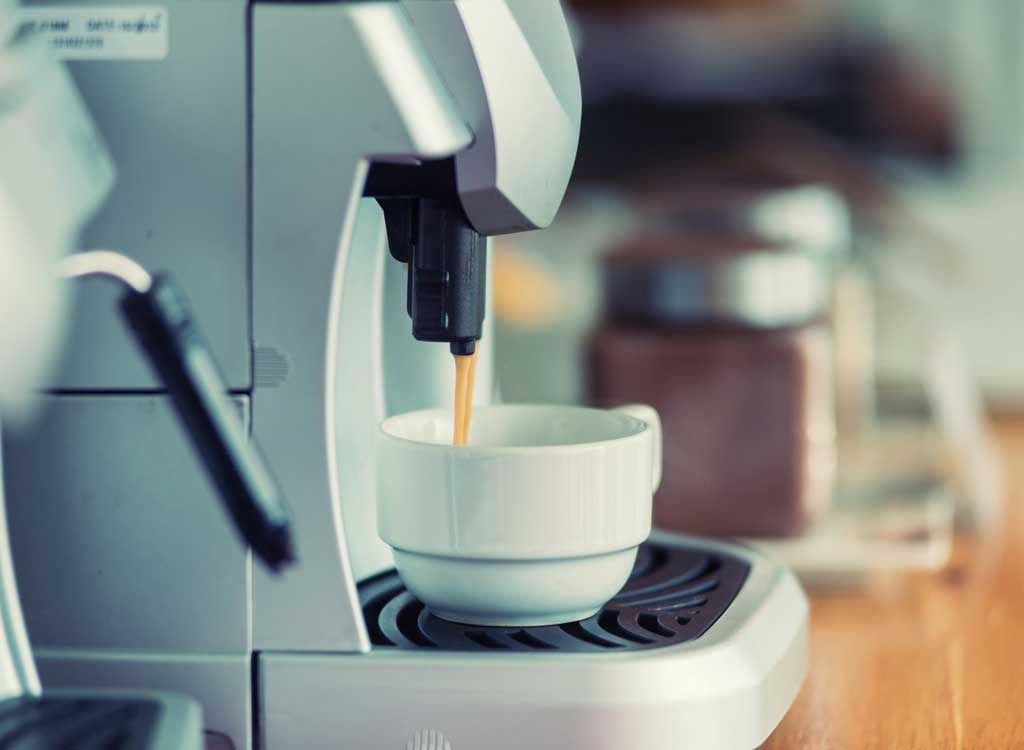
Whatever you do, pass on the pods.
“Avoid those single-serve capsule coffee makers,” McManus says. “While they’re fast and can be convenient, they make sad coffee.” And they’re not so hot for the environment. The Atlantic estimates that the amount of K-Cup capsules alone tossed each year could wrap around the Earth more than 10 times. So while you save yourself a little time, in the long-run, you’re losing out on great flavor you could get from another type of coffee maker.
And for those days you don’t want to make coffee at home, This Is the Best Coffee Shop in Your State.
